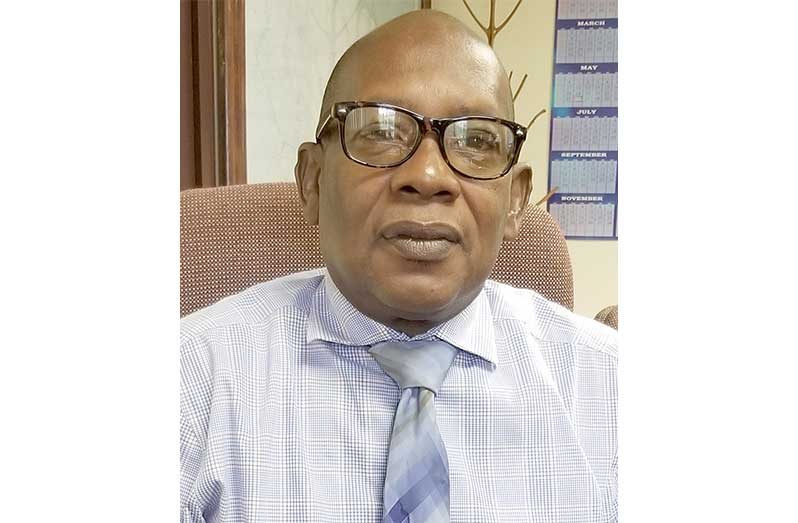The government has officially opened restorative justice offices in Regions Three, Four, Five and 10, with plans to operationalise additional offices in Regions One, Two, Six, Seven, and Nine by the end of August 2025. This development significantly expands the reach of the country’s restorative justice framework, first piloted in Region Four with the opening of the Restorative Justice Centre in April 2023.
The announcement was made by Director of Restorative Justice, Orrin Boston, on Tuesday during the opening ceremony for the Training of Restorative Justice Officers and Convenors. The event was held at the Police Officers’ Training Centre on Camp Road, Georgetown.
According to Boston, this is a significant step forward in decentralising access to justice and building community-based alternatives to traditional punitive systems.
“We developed an organisational chart, which serves today to identify the minimal staffing needs of the restorative justice centres in all regions of Guyana,” he explained.
He revealed that the restorative justice offices are located in the following areas: Region Three’s office is situated at Klien Pouderoyen on the West Bank of Demerara (WBD); Region Four’s at Triumph on the East Coast of Demerara (ECD); Region Five’s at Fort Wellington on the West Coast of Berbice; and Region 10’s at Linden.
These offices were completed and became operational in December 2024.
According to the Government of Canada, restorative justice refers to “an approach to justice that seeks to repair harm by providing an opportunity for those harmed and those who take responsibility for the harm to communicate about and address their needs in the aftermath of a crime.”
Boston stated: “Through the auspices of the Canada-Caribbean Expert Deployment Mechanism (CCEDM), we were able to train and certify 20 individuals to create a pool of restorative justice officers to assume positions in the various restorative justice centres situated in Regions Two, Three, Four, Five, and Six.”
The ultimate goal of CCEDM, according to the Canadian government’s website, is to support Caribbean countries in their efforts to diversify and strengthen local economies, build strong and climate resilient communities, and reduce gender and economic inequalities.
The Director of Restorative Justice noted that, to date, the government has been able to access three advisors—at no cost to the coffers—through this mechanism, all of whom possess the expertise needed to support the full launch of the new restorative justice centres.
In November of 2024, he said the Advisory Council on restorative justice was convened.
“The Advisory Council is the body of key stakeholders who would guide and inform on processes as we move forward…”
Boston confirmed that Region Eight remains the only area without an identified location for an office. He noted that efforts are ongoing to pinpoint a suitable site.
The national rollout of restorative justice offices is part of a broader initiative by the Attorney General’s Chambers and Ministry of Legal Affairs to promote alternative dispute resolution and foster community-level healing and rehabilitation. These offices aim to facilitate restorative processes that allow offenders to acknowledge harm, make amends, and reintegrate into society, while empowering victims and affected communities to find closure.
Each regional office is staffed with trained restorative justice officers and convenors, who will work in collaboration with judicial officers, police, community leaders, and social workers.
Boston continued: “We have developed training content and conducted cross-sectional training in restorative practices, and fundamentals for toshaos on the National Toshao Council, prison officers, probation officers, juvenile justice officers, members of NGOs [non-governmental organisations], and community leaders.”
“Relative to schools, we train teachers and welfare officers to aid the Ministry of Education, to deploy the use of restorative justice as an alternative disciplinary procedure to corporal punishment. We also engage magistrates, police, and the prison to foster restorative justice as a resolution and reintegration tool.”
Since the opening of the Region Four centre in 2023, several successful cases have already been mediated, with parties reporting high satisfaction and emotional closure.
The model has been praised for reducing court backlogs and providing a humane alternative to incarceration, especially for non-violent offenses.
As the government continues to push for nationwide implementation, public awareness campaigns and community sensitisation efforts are expected to follow, ensuring that citizens understand the purpose and process of restorative justice.
Boston pointed out: “The Attorney General [Anil Nandlall], himself, in 2024 conducted ministerial public awareness sessions in several regions. More significantly, in 2025, the Attorney General conducted ministerial public awareness sessions on restorative justice in Regions One and Eight.”
In closing, the Director of Restorative Justice emphasised that the Government of Guyana’s move to institutionalise restorative justice principles and practices marks a pivotal step toward achieving the United Nations’ Sustainable Development Goals (SDGs).
“…we need to promote peaceful and inclusive societies for sustainable development and provide access to justice for all and build effective, accountable and inclusive institutions at all levels.”
The Restorative Justice Centre was established to oversee the application of restorative justice as per the Restorative Justice Act, which was enacted in 2022.
The centre is located at Lot 341 East Street, South Cummingsburg, Georgetown. It was launched under the Support for the Criminal Justice System (SCJS) Programme.
The SCJS programme is a partnership between the Government of Guyana through the Ministry of Legal Affairs and the Inter-American Development Bank (IDB).
The general objective of the programme is to contribute to the reduction of high concentrations of prison population in Guyana. The specific objectives are: (i) to reduce the proportion of inmates who are pre-trial detainees; and (ii) to increase the use of alternative sentencing in the country.





.jpg)








